The Shelby Cobra 427 blends outrageous power, minimal weight, and raw danger into a timeless icon—an untamed machine that shaped racing history and still intimidates, thrills, and mesmerizes anyone brave enough to drive it.
There are cars that make you question engineering. There are cars that make you question sanity. And then there is the Shelby Cobra 427, a machine that makes you question your will to live in the best possible way—like being chased by a small tornado made of chrome, petrol, and the unresolved emotional issues of men from the 1960s.
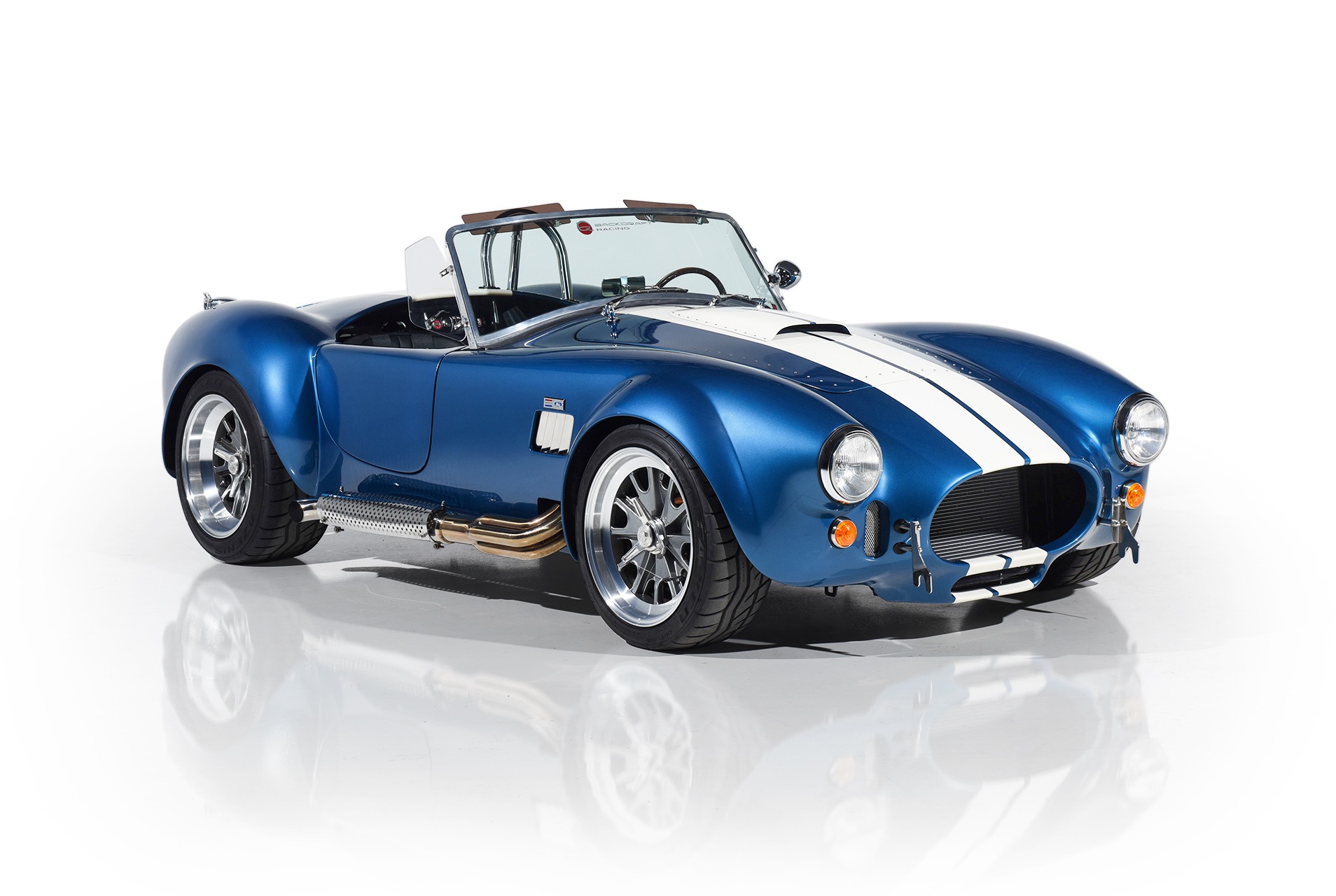
To understand the 427 properly, you must first understand one man: Carroll Shelby—a Texan whose personality was equal parts cowboy, salesman, engineer, and trouble-maker. This is the man who, despite suffering from a heart condition that could knock him unconscious without warning, insisted on racing sports cars at world-class speed. A man who won Le Mans in 1959, flew home, and immediately started scheming about how Americans could beat Europeans without spending European amounts of money. A man who looked at a tiny British AC roadster and thought: What if I stuff it with an engine so powerful it tries to leave the country?
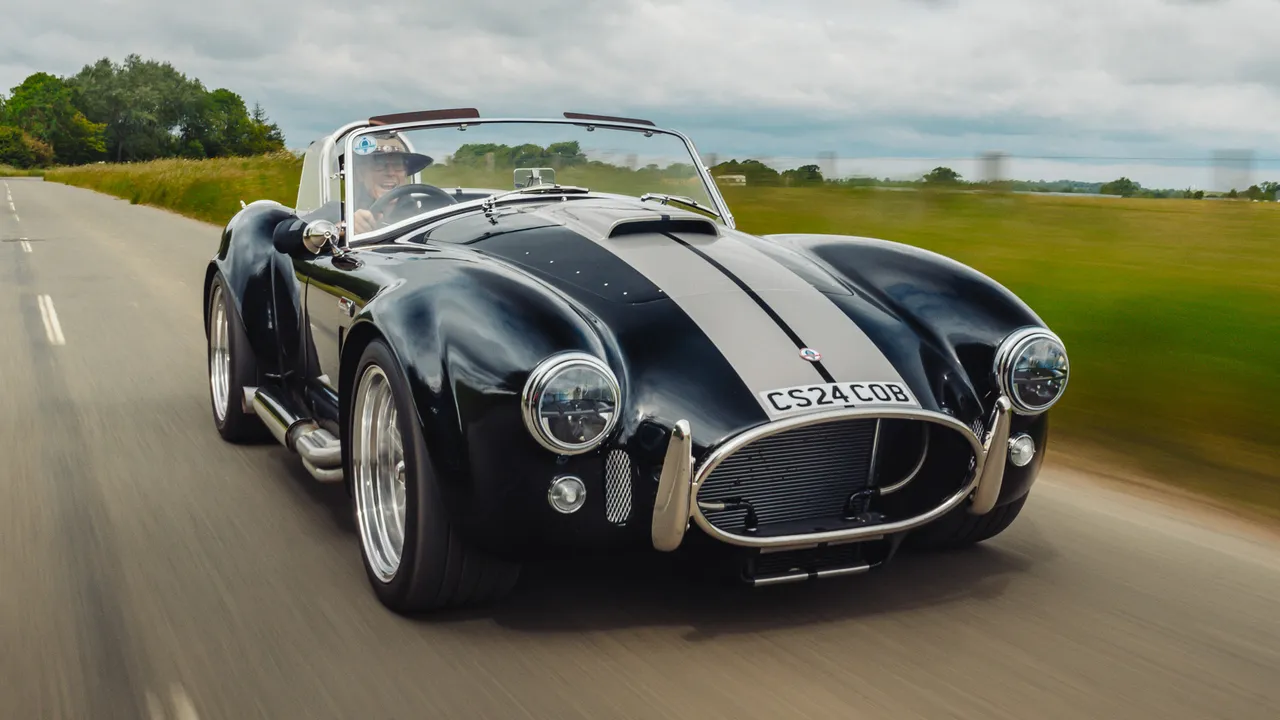
The story begins when Shelby convinced AC Cars to let him modify their delicate, almost gentlemanly AC Ace. He then convinced Ford to give him engines. And he did this using his legendary gift: the Shelby phone call, which went something like—“Hi, I need an engine. Nah, nothing big. Just something that can scare people.” Ford, at the time desperate to beat GM and Ferrari at absolutely everything, said yes before anyone thought about safety, physics, or common sense.
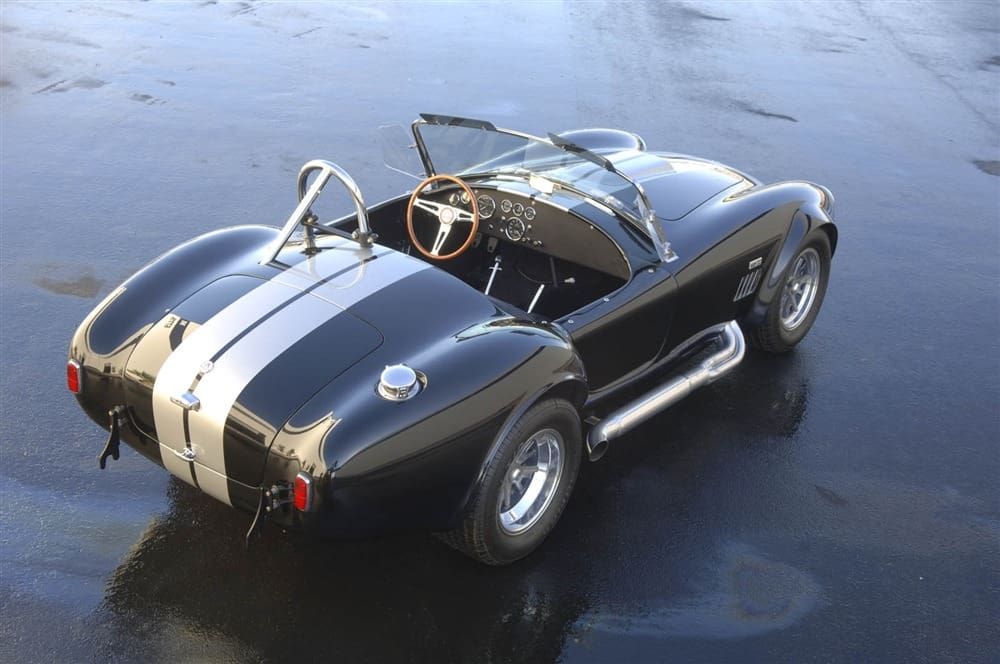
The early Cobras with 260 and 289 cubic-inch engines were already deranged little beasts. Light, furious, and twitchy enough to send inexperienced rich men directly into hedges across California. But Shelby wasn’t satisfied. No, he decided that if a little power was good, then a lot of power was obviously better, and far too much power was probably perfect.
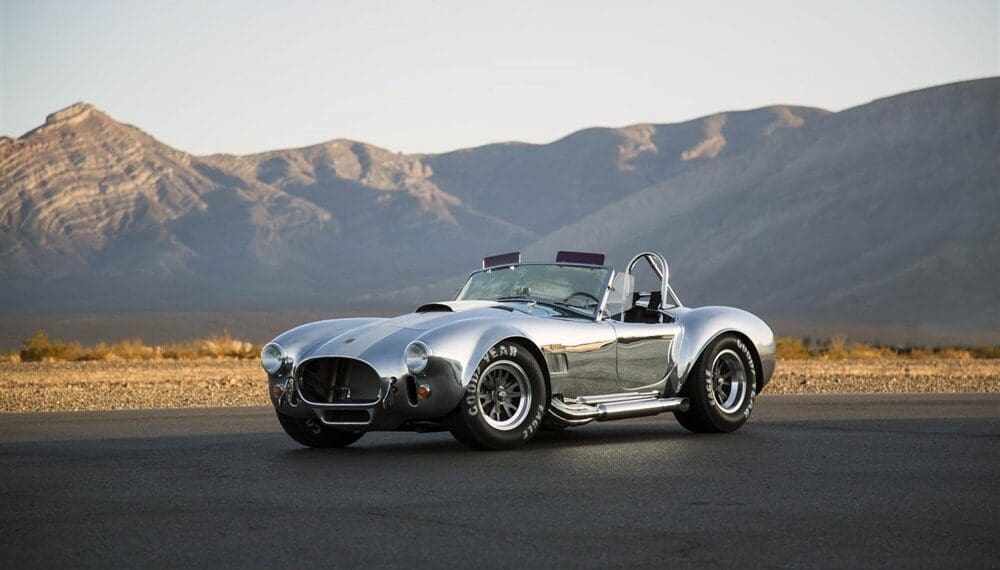
Thus arrived the 427: Ford’s fearsome 7.0-litre FE big block, an engine designed originally for NASCAR, shoved into a chassis that was about as stable as a bar stool balancing on a pool table during an earthquake. AC’s engineers—men like Alan Turner and the talented draftsmen at Thames Ditton—had to redesign the frame completely. They widened it, strengthened it, and added beefier suspension, all while trying very hard not to say: “Carroll, this is insane, and you should stop.” Because, of course, stopping was not Shelby’s style.
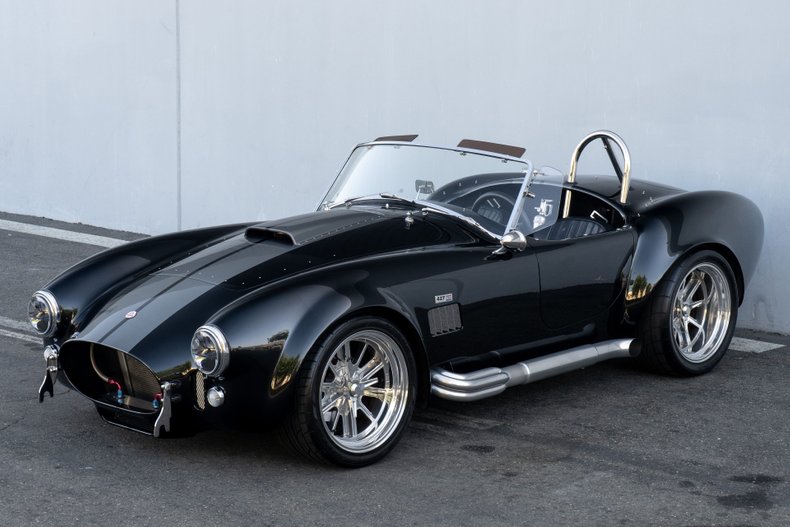
In 1965, the Cobra 427 roared into existence. On idle it sounded like it had swallowed thunder. On throttle it sounded like God clearing His throat. And on full acceleration it sounded like the kind of apocalypse that would make even Vikings say: “This seems a bit much.”
Racing driver Ken Miles, the quiet British mechanical genius who could sense chassis flex the way a cardiologist senses pulse, famously tested early Cobras and helped fine-tune their behaviour. According to team folklore, Miles climbed out of a prototype 427 and uttered something along the lines of: “It goes like hell, but it wants to kill you.” Coming from a man who drove Le Mans at night in the rain, that was not a casual remark.

Other drivers weren’t so poetic. Some simply got out of the car trembling, muttered something about needing a drink, and walked off to reconsider their life choices.

But that was the point. The Cobra 427 wasn’t made for normal people. It was made for lunatics—for those who believed that steering correction at 240 km/h is a personality-building exercise, and that rear-wheel traction is something only cowards care about.
.jpg)
.jpg)
The 427’s performance figures, even today, look like printing errors. A curb weight barely over a tonne. Power figures ranging from 425 hp to well over 500 in competition trim. Zero to one hundred in about four seconds—in the 1960s, mind you—using tyres that had the grip characteristics of polished carrots. And a top speed of roughly 265 km/h if you had enough road, courage, and spare trousers.
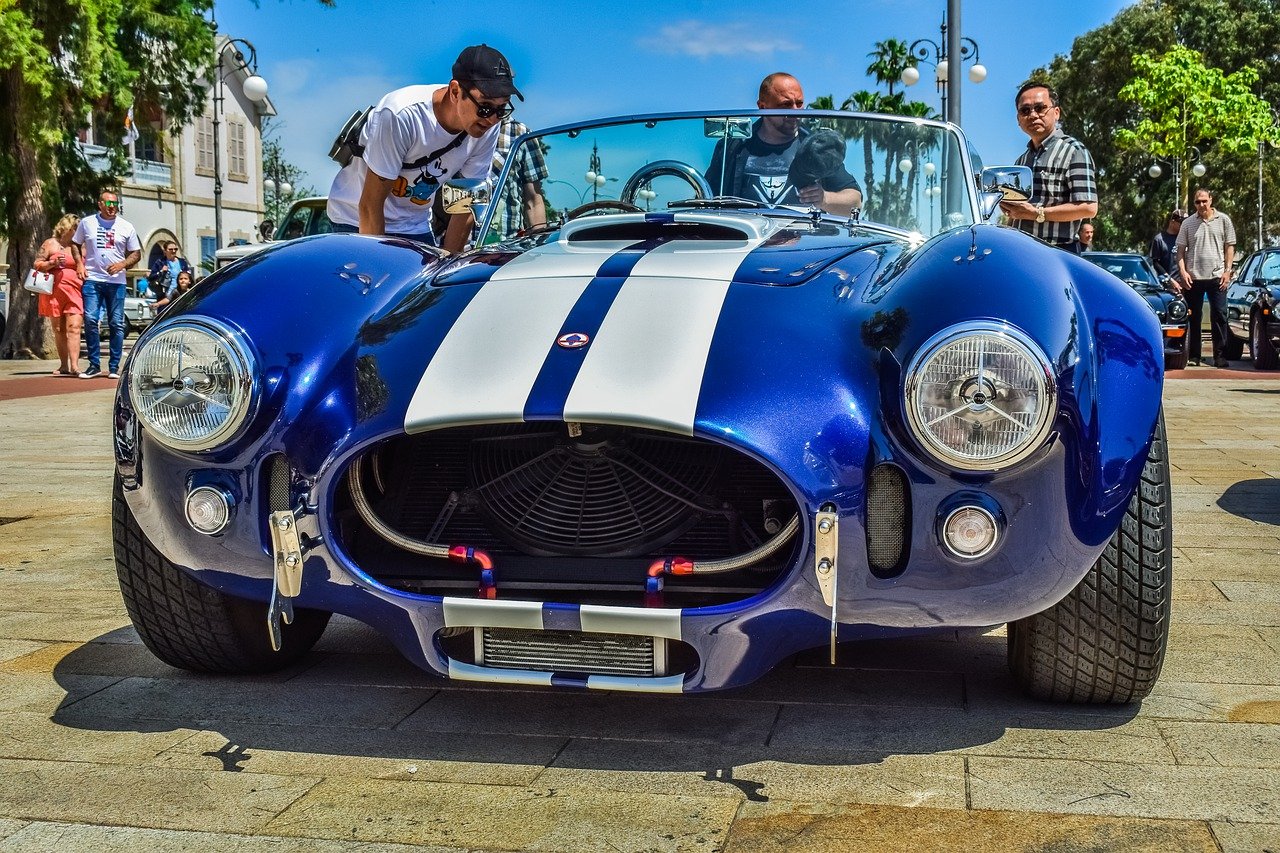
Behind the wheel, the experience is pure uncut mechanical theatre. There’s no traction control, no ABS, no stability management, no polite intervention from silicon. There is only you, a giant naturally aspirated V8, and a chassis that wants feedback in Morse code—specifically: YOU. WILL. RESPECT. ME. Every throttle blip rocks the entire car. Every shift of the Toploader gearbox feels like cocking a Winchester rifle. The steering is heavy but eerily precise, like the car is reading your thoughts but judging them simultaneously.
.jpg)
And then there’s the heat. The side-pipes—those glorious polished cannons along the sills—do not merely threaten to burn your legs. They promise to. Cobra owners call them “branders” for good reason. If you climb out carelessly, you’re going home with a signature on your calf, like a VIP pass to a concert you regretted attending.
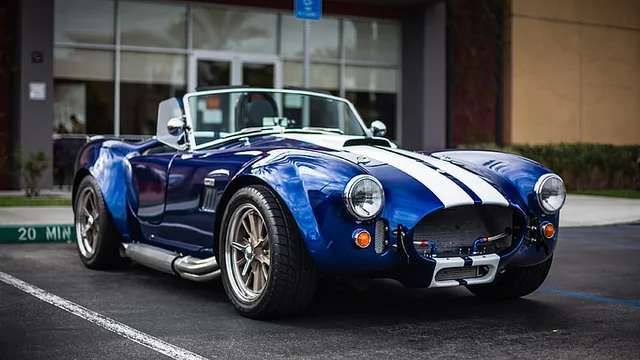
In competition form, things got even more outrageous. The 427 S/C—Semi-Competition—was essentially Shelby saying: “Let’s sell the race cars that nobody bought.” These were the leftover homologation chassis fitted with unbelievable engines, roll bars, competition suspension, and the aerodynamic efficiency of a brick with violent intentions. And collectors today—despite knowing exactly how dangerous they are—will fight, claw, and bankrupt themselves for one.

Why? Because the Cobra 427 is more than metal. It is a myth, a cultural artifact, a statement that America could build a sports car so brutally fast that it terrified European manufacturers. It embarrassed Corvettes, worried Ferraris, and made the Lamborghini Miura look like a delicate sculpture in comparison.

Its value in the collector world is near-religious. A real CSX-numbered 427 is the sort of thing museums beg for and millionaires baby like fragile relics. The legend only grew as replicas appeared—first cheap, then refined, then so accurate that even experts had to squint. But the originals… the originals carry stories. Cars driven by men like Ken Miles, Bob Bondurant, Dan Gurney—whose courage could only be measured in units currently illegal in most countries.

Today, driving one is like time-travel: a reminder of an age before regulations, before traction control, before anyone asked whether a sports car should be “approachable.” The 427 does not approach you. It arrives, shakes your hand too hard, blows cigar smoke in your face, and challenges you to a duel.

And yet, buried beneath the insanity is brilliance. A simple chassis perfected by hand. A massive engine tuned by people who knew what mechanical violence could accomplish. A design so elemental that even modern supercars still copy its stance. The Cobra 427 is not merely old fast; it is eternally fast—because fast isn’t only numbers. Fast is what a car makes you feel.

And if there is one machine on Earth guaranteed to make you feel alive, loudly, foolishly, dangerously alive—it is this one.

That is why, decades later, collectors still chase it, engineers still admire it, and motoring journalists still tremble slightly when they drive it. The Shelby Cobra 427 is not a car. It is a dare. A beautifully reckless dare written in aluminium, petrol, and big-block thunder.
-